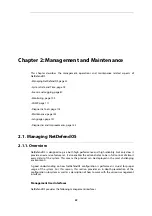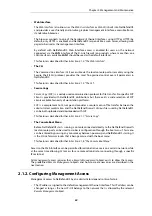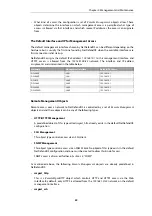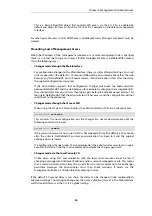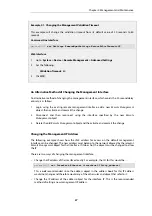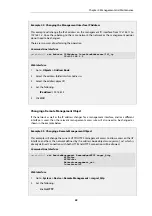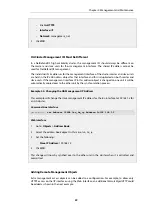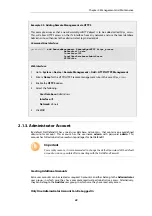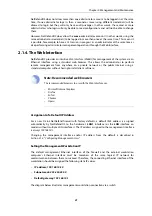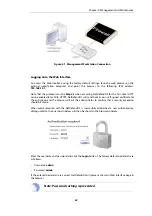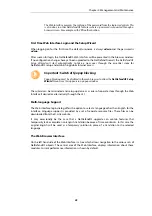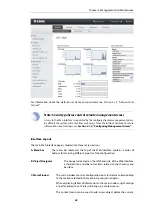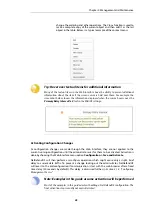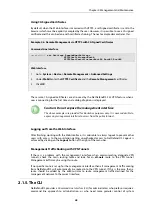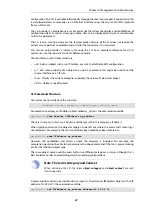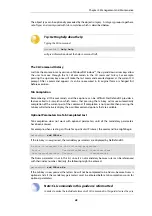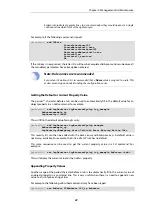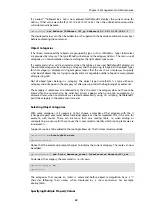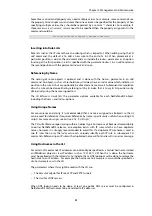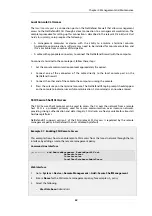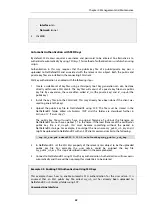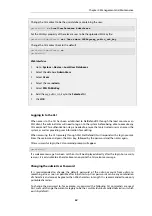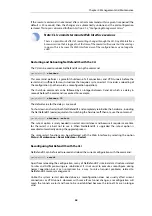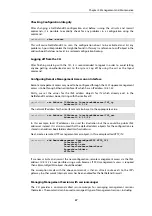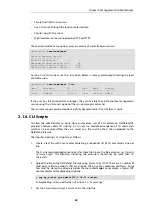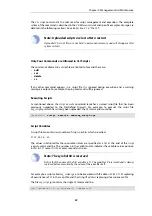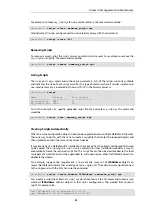
Using CA Signed Certificates
By default, when the Web Interface is accessed with HTTPS, a self-signed certificate is sent to the
browser which must be explicitly accepted by the user. However, it is possible to use a CA signed
certificate and this can be done with certificate chaining. The next example demonstrates this.
Example 2.6. Remote Management via HTTPS with CA Signed Certificates
Command-Line Interface
gw-world:/> set Settings RemoteMgmtSettings
HTTPSCertificate=HostA
HTTPSRootCertificates=RootA2,RootA1,RootA3
Web Interface
1.
Go to: System > Device > Remote Management > Advanced Settings
2.
Under WebUI enter the HTTPS Certificate and the Remote Management certificates.
3.
Click OK
These same CA signed certificates are also used by the NetDefendOS SSL VPN feature when a
user is connecting for the first time and a dialog of options is displayed.
Caution: Do not expose the management interface
The above examples are provided for illustrative purposes only. It is never advisable to
expose any management interface to access from the public Internet.
Logging out from the Web Interface
After finishing working with the Web Interface, it is advisable to always logout to prevent other
users with access to the workstation getting unauthorized access to NetDefendOS. Logout is
achieved by clicking on the Logout button at the right of the menu bar.
Management Traffic Routing with VPN Tunnels
If there is a problem with the management interface when communicating alongside VPN
tunnels, check the main routing table and look for an all-nets route to the VPN tunnel.
Management traffic may be using this route.
If no specific route is set up for the management interface then all management traffic coming
from NetDefendOS will automatically be routed into the VPN tunnel. If this is the case then a
route should be added by the administrator to route management traffic destined for the
management network to the correct interface.
2.1.5. The CLI
NetDefendOS provides a
Command Line Interface
(CLI) for administrators who prefer or require a
command line approach to administration, or who need more granular control of system
Chapter 2: Management and Maintenance
46
Summary of Contents for NetDefendOS
Page 30: ...Figure 1 3 Packet Flow Schematic Part III Chapter 1 NetDefendOS Overview 30 ...
Page 32: ...Chapter 1 NetDefendOS Overview 32 ...
Page 144: ...Chapter 2 Management and Maintenance 144 ...
Page 284: ...Chapter 3 Fundamentals 284 ...
Page 392: ...Chapter 4 Routing 392 ...
Page 419: ... Host 2001 DB8 1 MAC 00 90 12 13 14 15 5 Click OK Chapter 5 DHCP Services 419 ...
Page 420: ...Chapter 5 DHCP Services 420 ...
Page 573: ...Chapter 6 Security Mechanisms 573 ...
Page 607: ...Chapter 7 Address Translation 607 ...
Page 666: ...Chapter 8 User Authentication 666 ...
Page 775: ...Chapter 9 VPN 775 ...
Page 819: ...Chapter 10 Traffic Management 819 ...
Page 842: ...Chapter 11 High Availability 842 ...
Page 866: ...Default Enabled Chapter 13 Advanced Settings 866 ...
Page 879: ...Chapter 13 Advanced Settings 879 ...


